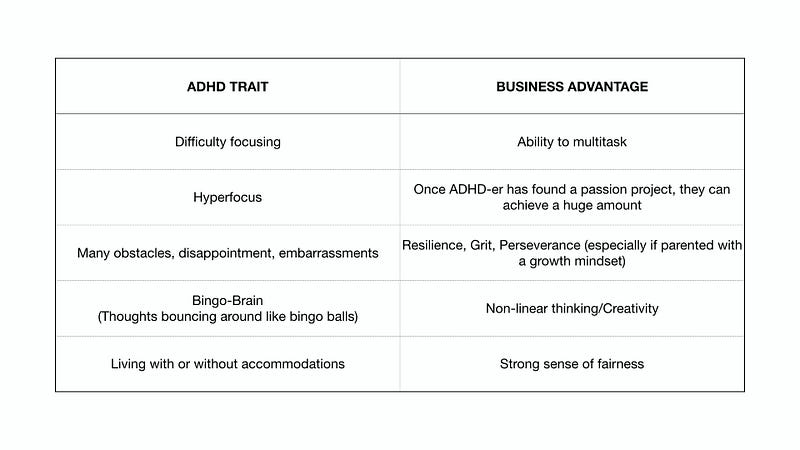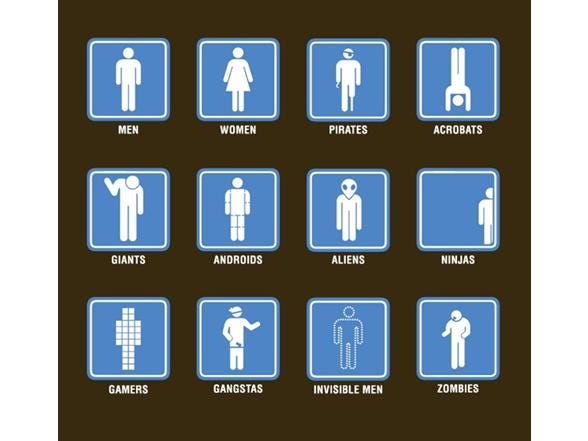
In 1951, psychologist Solomon Asch conducted a series of experiments on conformity.
Groups of eight participants took part in a simple task. All but one participant were party to this experiment. The true focus of the study was to track how the chosen subject would react to the behaviour of the other seven.
There were sets of two cards shown to all eight participants. One card had one line on it, while the other card had three lines labelled “A”, “B”, and “C” (as per below).
One of the “A”, “B”, “C” lines were the same length as the one on the first card. The other two lines were very clearly longer or shorter. The task was to choose which one matched.
To ensure we are on the same page, the answer below would be C.
Seven participants were coached on how to behave to the remaining participant or “subject”. The seven would give the correct response for a long period of time and on others a clearly incorrect response. The group of eight was seated so that the subject always responded last.
The aim of the experiment was to measure how many subjects would change their answer to conform to the answers of the 7 collaborators, despite it being wrong.
A sizeable minority of responses conformed to the seven collaborator’s (incorrect) answer (a total of 36.8 percent).
Naturally, the subjects were interviewed after the study and the real aim of the study was revealed to them. The subjects said that often they were “just going along” because they did not want to stand out from the crowd.
Uniformity of People = Uniformity of Thought
A mere 12% of Fortune 500 companies in 1955 were still on the list in 2016. The other 88% have either gone bankrupt or were merged or acquired. Many of the companies on the list in 1955 are victims of irrelevance, “me-too propositions”, disruption (through digitization or otherwise) and/or poor leadership.
Leadership in many companies is “the same”. The same in the way it is conducted, the same in the way it is incentivised and the same in the way it is mentally charged. Leaders are often surrounded by yes people, who don’t respectfully challenge the leader’s decisions.
Human beings are tribal by nature. Our brains feel safe when we flock with people who are similar to us. Our body releases oxytocin when we feel we belong to a team, tribe or community of people who are like us. It is embedded in our DNA to fit in, imagine you are part of a tribe and you start to question leadership, you question the way things are done. If you did this back then, you would be ejected from the tribe and would probably die.
When we hire from the same business schools, recruit from the same ethnicity and train everyone in the same way we create a tribe. Creating a tribe with a common goal is great business practice. Creating a tribe where everyone thinks the same is not.
Diversity of People = Diversity of Thought
Working with people who are different from us challenges us to overcome crystallised ways of thinking. If we are open to such respectful challenge, we will sharpen our performance and our results.
Let’s consider how we might invite diversity into our lives.
NeuroDiversity is Good for Business
Gender
A Credit Suisse study analysing 2,400 companies found that organisations with at least one woman on the board have outperformed their peer group with no women on the board by 26% over the last six years
Another study analysing 4,277 Spanish companies on levels of gender diversity in R&D teams found that companies with more women were more likely to introduce new innovations into the market.
Interestingly, recent guest on the innovation show, leading expert in Neuroleadership Friederike Fabritius tells us that because women have more oxytocin levels and fewer testosterone levels, they tend to take less impetuous and more calculated risks. This takes diversity to a new level where it becomes Neurodiversity. With more neurodiversity comes more ideas and more innovation.
Autism
Psychologists have found that a high IQ alone does not guarantee creativity. Instead, personality traits that promote divergent thinking are more important. Divergent thinking is found among people with personality traits such as nonconformity, curiosity, willingness to take risks and persistence.
These are traits synonymous with autism, yet we treat autism as a disability.
A 2015 study, which analysed data from 312 people who took part in a series of tests on creativity found that while those who had autistic traits offered fewer responses to problems presented, their solutions were more original and more creative than those who did not have autistic traits.
ADHD
This week’s guest on the innovation show is Dale Archer M.D. a Psychiatrist and Founder/CEO of The Institute for Neuropsychiatry and NYT bestselling author of: ‘The ADHD Advantage’ and ‘Better than Normal’.
As an ADHD-er, Dr Archer emphasises that a crucial way to incorporate ADHD into society in a successful manner is reframing what are seen as disadvantages as advantages.
Dyslexia
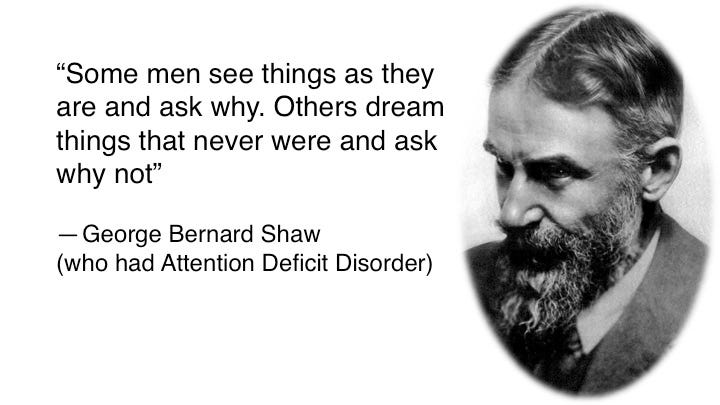
Dyslexics ask “Why Not?”
About 20% of people are dyslexic.
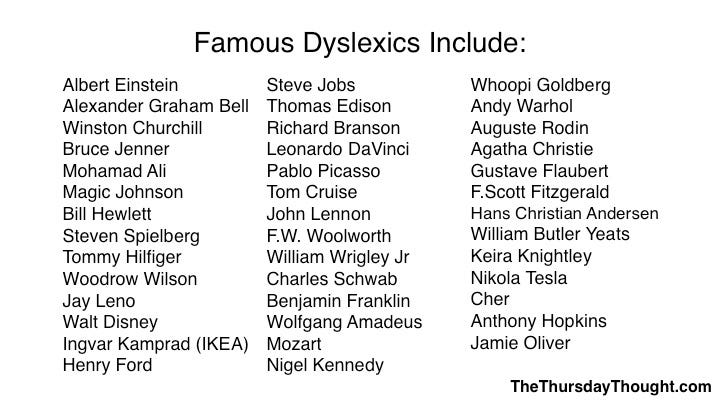
Dyslexics see the world differently because their brains work differently.
Dyslexics process information differently. They see pictures, not words (and often see words as pictures), this is why phonetic learning for a dyslexic is so punishing. In a non-dyslexic brain, the left side is bigger, and it is the left side which processes language. In the dyslexic brain is the right side is the same size as the left side, this is because they use it more. Having a larger right side seemingly enhances the gift.
Dyslexic thinking has many advantages. Innovation show guest Dr Pauline Cogan tells us that most of us learn like an “inchworm” we learn sequentially. However, the dyslexic is a “butterfly” and learns by seeing the big picture and figuring out how to dissect it and recreate it.
Dyslexic thoughts are like 3d movies in their heads, they see things as if they are really happening, they have extremely vivid imaginations. A dyslexic reader will often skip words in a sentence but still deliver the sentence with a few words omitted or even added in. This is where big picture thinking comes in, dyslexics are great at “joining the dots”.
Dyslexics have great perseverance, they persevered through school, they made it through, they navigated the system and they hustled.
Dyslexics delegate well, they have to. For years they had to find coping methods. Even in the workplace dyslexics will delegate tasks like note taking, follow up emails etc. This is a gift that is essential as an entrepreneur.
They master skills faster than a non-dyslexic. Once they like a subject or find a subject, hobby or method that they like, they should be left to it, they will master it. Once interested in a subject the dyslexic will master the skill very quickly. Pauline tells us of a child she knows who learned the Moonlight Sonata in 4 months using YouTube.
Diversity Change only Happens when Societal Change Happens
The World Economic Forum has predicted that, globally, the gender gap won’t close entirely until 2186!
How long will it take us to change our perspective on diversity?
Acceptance and inclusion need to begin in the education system. Through education, we know that people with different brains bring different skills to the table. So let’s invite them to the table in the first place!
Disruption is happening at an alarming rate. Artificial Intelligence and Robots are going to replace jobs. Creativity, Imagination and Divergent thinking will be more important than intelligence alone.
If AI becomes master of intelligence, logic and data, then…
CQ (Creative Quotient) > IQ (Intelligence Quotient)
AQ (Adversity Quotient) > IQ (Intelligence Quotient)
IMQ (Imagination Quotient) > IQ (Intelligence Quotient)
These are traits of gifted people previously (and still in some cases) considered cognitively impaired. It is shameful that some children were beaten in schools because of their abilities, beaten to “fit in” and become part of the herd.
Education is waking up to their gifts. Business is waking up to their gifts. It is our responsibility as a society, to wake up to their gifts.
It is increasingly becoming their time to shine, but let’s all do our part to make that happen.
“Everybody is a genius. But if you judge a fish by its ability to climb a tree, it will live its whole life believing that it is stupid.” — Albert Einstein
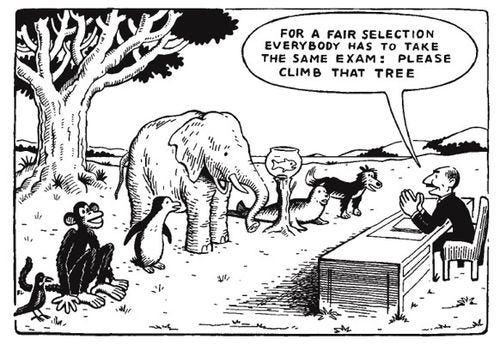
On this week’s innovation show we talk to Dale Archer M.D. a Psychiatrist and Founder/CEO of The Institute for Neuropsychiatry and NYT bestselling author of two great books: ‘The ADHD Advantage’ and ‘Better than Normal’.
Dr Archer about how ADHD can be a huge advantage if we society reframes ADHD-ers to see it as an advantage and not a sickness. We talk about the perfect storm of overdiagnosis, the profits from ADHD medication and trigger-happy prescriptions of ADHD drugs.
We talk about how the ADHD brain works and is challenged by our one-size-fits-all education system.
We talk about the ADHD gifts of resilience, “Bingo-Brain, non-linear thinking and multi-tasking.
Dale shares some tips for parents of ADHD-ers and we celebrate some of the heroes of ADHD.
Have a listen here:
Website: http://bit.ly/2FwsOJw
Soundcloud: https://lnkd.in/gBbTTuF
Spotify: http://spoti.fi/2rXnAF4
iTunes: https://apple.co/2gFvFbO
Tunein: http://bit.ly/2rRwDad
iHeart Radio: http://bit.ly/2E4fhfl
Subscribe by email: http://bit.ly/2EWVlbj

